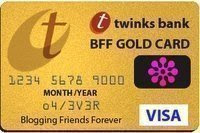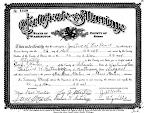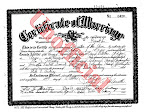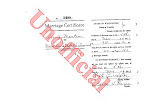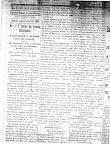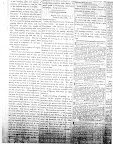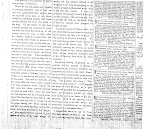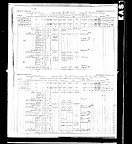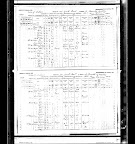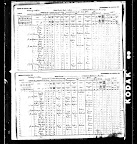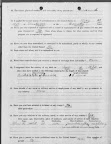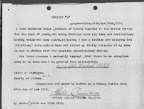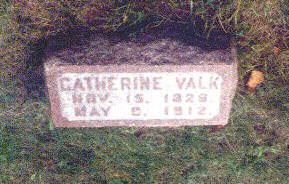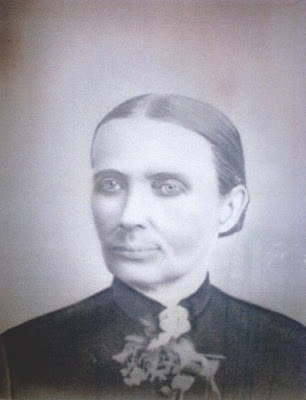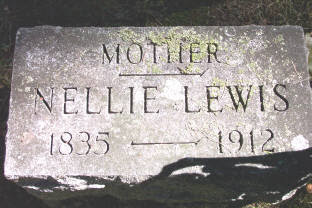I'm writing this post because I expect to have a lot of new visitors within the next few days. With the large number of genealogy bloggers jumping on board
Facebook and adding me to their friends list, the
Showcase Your Blog event at Successful Blog, and my interview (online article
here; hard copy to be published July 27th in the business section) by technology columnist Tom Sowa of the
Spokesman-Review (Spokane, Washington), with a link to this blog, I am sure there will be a number of people asking, "so what's this all about?" Welcome! I'm happy to share with you some things about genealogy, this blog, and myself.
First of All, the NameAnceStories (ann-SESS-tore-ees) was a word I coined combining "ancestors" and "stories." I wanted a place online where I could publish the wonderful stories that my ancestors' lives had written in time and history. I started out with a website, because as I researched my ancestors' lives, I would come up with additional or corrected information to what I already had. Publishing their biographies in book format would not be convenient or current for long.
Genealogy vs. Family HistoryFor the most part, the term "genealogy" is a reference to the research process of discovering who your ancestors are (names, dates, locations) as far back as you can go in time. "Family history" is putting your ancestors into context with the history of their times, the society in which they lived, and adding personality and depth from small clues you uncover in photographs, letters they've written, or the memories they left behind in the minds and hearts of their descendants.
So why am I so crazy about family history? I think it came out of a hunger to know more about my family and heritage, since I grew up in Native American communities in Southeast Alaska, where I was one of the few white children in those villages. My parents appreciated the diverse cultural education I was getting, but wanted me to understand my own heritage. They started buying me children's books on the Netherlands and incorporating Dutch holidays into our family celebrations. Even when we moved to Washington State when I was 12, we were still 2,000 miles away from my extended family.
I've also always loved puzzles and mysteries; some of my favorite childhood books were the Trixie Belden mystery series. Family history and genealogy are like a huge, living puzzle. You have bits of information here, and snippets of facts there, and you have to put them together to see the big picture!
Why a Blog?In case you don't already know, "blog" stands for "web log", a journal, diary, or log kept online. It can be kept private, or made public like this one. The advantages of a blog over a website are several. It's quicker and easier to change or add information on a blog than on a website; Google indexes blogs--especially those on Blogger--daily to make it easier for other relatives to find you; and you can keep in contact with your readers when they leave comments on your posts (articles).
ContentI do write a lot about my ancestors' lives. One of my regular features is
Wordless Wednesday, in which I post just a photograph of an ancestor or relative of my husband or myself. The following day, I write a biographical sketch on that person. When I come across a great genealogy database, or a keyboard shortcut, or some sort of research technique that's especially useful in genealogy, I feature it in a post. I publish press releases from various genealogy websites (subscription and free-for-use). Sometimes I write a review on a book about genealogy or history. I try to highlight what's happening in the genealogy world, either globally, nationally, or locally (I also blog for my local genealogical society
here). Things I love to share are my successes: when I finally discover the names of an ancestor's parents or a document that proves a theory I had about something in their lives. These can be motivational, or even give research tips, to others with similar brick walls.
I participate in a lot of carnivals, too. A blog carnival can be thought of as a magazine with every article written by different authors on a specific topic. All the articles can be found on each individual author's blog, with the carnival host listing the table of contents and links to all the specific articles at his or her own blog. The carnivals I've participated in are the
Carnival of Genealogy, the
Carnival of Central and East European Genealogy, the
Carnival of Irish Heritage and Culture, the
"Where Were You?" Carnival, the
"I Smile for the Camera" Carnival, and the
Cabinet of Curiosities. These carnivals give me an opportunity to focus on a particular topic and highlight something about which I may not have otherwise written.
If you decide that you like this blog (!), you can choose to either bookmark it, have each post e-mailed to you, or have the feed sent to your favorite feed reader (Bloglines, Google Reader, etc.), by using the appropriate tools in the top right hand margin. Take a look at all the goodies in both margins...they go all the way down on both sides (you'll see I write for more than one blog). It's a "busy" look, I know. I'm trying to pair it down to make it a little easier on the eyes.
More Things I DoI host
Scanfest nearly every last Sunday of the month. It's a time when family historians gather online to chat while they scan their precious family photos and documents. Why? Because scanning can be b..o..r..i..n..g! Chatting helps the time go by quickly, we get to know one another better, and by having a scheduled time to do our scanning, we actually get to it, instead of putting it off. Feel free to join us this Sunday!
I'm enjoying being on
Facebook and interacting with other genealogists and bloggers there, as well as connecting with friends and relatives from my offline world. There's a huge genealogy community on Facebook, thanks to Megan Smolenyak Smolenyak's
Unclaimed Persons project (and no, I did not stutter when I wrote her name!).
I teach Online Genealogy classes--in person--for the Community Colleges of Spokane and the Spokane County Library District. I also teach some members-only computer classes for the
Eastern Washington Genealogical Society, and I speak to various genealogical groups in the Inland Northwest. If you would like to take one of my classes or have me speak or give a presentation to your group, please e-mail me at kidmiff
ATgmail
DOTcom.
My Offline LifeI am married and we are the parents of two high-school teenagers that make our lives "interesting," to say the least. We own a 100-year-old home that we are restoring whenever we have the odd hundred dollars or the occasional dozen hours to invest (we've notice that the two rarely coincide). We in turn are owned by a playful, slightly paranoid domestic tabby.
I work as support staff for special education at the middle school level in my local school district. The 2008 - 2009 school year will be my ninth year working with students of varying disabilities, which have included mental retardation, cerebral palsy, traumatic brain injury, spinal bifida, fetal alcohol syndrome, Down's Syndrome, Asperger's Syndrome and autism. Children and young adults with autism are my favorite group of the disabled community to work with, because autism is such a challenge. Did I mention before that I like puzzles? :-) Once you find "the" key to working with a student, a wonderful bond exists that brings great joy to daily work life. I consider myself very privileged to work with these students and blessed with a fabulous group of co-workers.
Away from my computer, I enjoy needlework (all kinds, but especially crochet and cross-stitch), reading, and walking. I'm not much of a TV watcher, but love black-and-white classic movies and old television shows on DVD. Classical, big band, country, and '80s pop are favorite music.
Thanks for taking the time to read this very long post. I hope that you will want to visit again. Feel free to leave your comments below.

